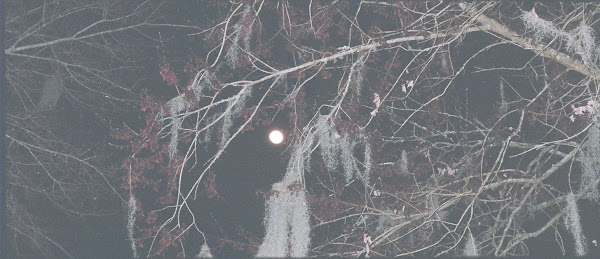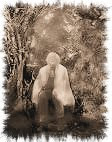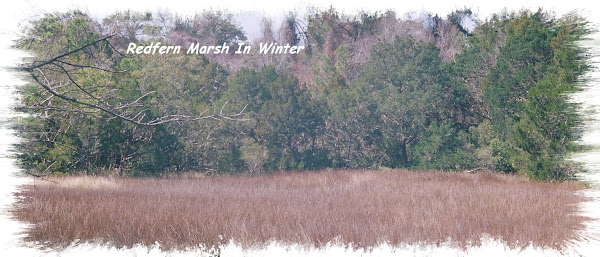The Enneagram
- ". . . it is a system of Spirit-creation. This is effected by three grand materials acting thus one upon the other for a series of years. These three materials are the Intelligence, the Human Heart (as distinguished from intelligence or mind) and the World or elemental space suited for the proper action of Mind and Heart on each other for the purpose of forming the Soul or Intelligence destined to possess the sense of Identity. I can scarcely express what I but dimly perceive - and yet I think I perceive it." [1]
Gurdjieff first introduced the enneagram to his pupils in 1916. It was presented as a universal symbol for understanding how a process in time could become organised to become an evolutionary event. Such a process is no longer 'in' time but creates its own time and becomes 'relatively immortal' as a living structure.
Structure as in living organisms and process as in becoming in time can be understood as sevenfold: seven days of creation, seven levels from atom to organism, seven steps in the musical octave (as we have in the diagram below), etc. Gurdjieff talked of a 'law of seven'. This law in its 'pre-creation' state - that is, before the universe existed at all! - had seven equi-distant intervals in it. It was a closed cycle. After the creation, the steps were no longer equal. The reason for this was that some gateway or opening had to be provided for different processes to connect with each other, or to form a relationship. The original single-value state (Absolute) divided into multiple states, or 'fractions' of the whole. The modified law of seven allows these different fractions to blend and return together towards the single-valued state. Only, this return would be an enrichment and not simply a repetition.
 |
In the diagram above, the three lines represent three independent processes (the significance of three will appear later). They begin separately and then converge. First they have to be connected or coupled together. This operation may be thought of as bringing them into synchronisation. Energy can flow between them. Secondly, they have to be coalesced, that is manifest as a single 'will'. This is the more difficult operation of 'integration without rejection'. One of the original meanings of the word 'universe' was of the diverse becoming one. This kind of unity is not a reduction of the original diversity to an abstract oneness. It is a synergy. [2]
Gurdjieff referred to the two moments of coupling and integration as 'shocks', which meant the meeting of independent elements. Since the processes involved are extended in time, this will mean that the two 'shocks' occur in succession. Using a musical scale as an analogy, Gurdjieff proposed that these take place between mi and fa, and between si and do (as shown in the diagram above).
The three processes signify the operation of 'the law of three'. This law is a-temporal in nature. It is only when it is inserted into the 'law of seven' that the three elements come into play successively. We can think of what is happening as an operation of the 'law of three' on the 'law of seven'. The 'law of three' is that of relationship.
In brief: when the two laws are linked, each operates on the other and modifies its working. The modifications of the 'law of seven' give rise to what we know as the enneagram. The enneagram deals with self-sustaining wholes.
In dealing with living wholes, or 'organisms', Gurdjieff assumed the idea of self-renewal. The basic symbol of self-renewal is that of the snake swallowing its own tail. That which arises as the culmination of the developmental process guides the process from its beginning. In modern cybernetics this is depicted in equations which re-enter themselves, or reiterations. [3] Self-renewal requires a cyclic action of internal self-replication rather than external replication. It takes in material from outside and makes it part of itself (eating and assimilation). According to Gurdjieff, this requires a threefold action.
One process begins and develops to the point it can become connected with another kind of process. The second process is making a new beginning and so it starts at a higher level. So the processes are working in a staggered fashion, coming in one after the other. The second process develops so-to-say 'inside' the first until it can connect with a third process. When we have three processes linked in this way, they form a triad and can 'self-organise' that is: direct the integrative build-up; reproduce, and innovate. [4]
Organisation comes from the 'law of three'. The three processes have to form a relationship. The arbitrary impingement of processes will not lead to coalescence. The point of integration is a complex whole in which the first process provides the 'body', the second the 'energy' and the third the 'knowledge' of the whole.
In a living organism, the first process must repeat as self-renewal. An organism is constantly replacing its body. The energy it receives is transformed and passes into other organisms. 'Knowledge' connects to the whole ecosystem in which the organism exists. Within the scale of the organism itself, it represents its perception of the world. [5]
This threefold stepwise action is not obvious in the enneagram symbol (see below):

We have to know that a first process begins at point 0, a second at point 3 and a third at point 6. What happens with the second and third processes beyond point 9 is literally 'beyond form', or unknown, relative to the given whole. Note that the si-do interval is 'hidden' where octaves enter or complete. We have to imagine these intervals as 'inside' the points 3, 6 and 9. Gurdjieff says about this that the interval is 'contained in' the higher do.
The main example Gurdjieff gave of the working of an enneagram concerned the human digestion and assimilation of 'foods'. There are three kinds of food, corresponding to the three octaves: food, air and impressions. The assimilation of impressions, the third being-food, according to Gurdjieff, 'is not subject to cosmic law'.
Thus, the enneagram can be seen as a symbol of a gateway connecting the seen and the unseen.
People talk of 'applying' the enneagram to various types of situation, but this is a misleading approach. Practical experience of some domain of transformation, such as in art, science or business is essential; but this is to enable us to read the enneagram in its own right. Practical experience on the one hand and the synthesis of laws in the enneagram on the other help us to understand what it is 'to do'.
One of the great lessons of the enneagram is that any kind of development must reach its ceiling and be transcended in another dimension. In this sense, even consciousness development must lead at last to a kind of unconsciousness, a state beyond consciousness.
The enneagram can serve to facilitate mutual enquiry and dialogue concerning 'cosmic laws'. Remember that 'cosmic' here means simply that which is found in EVERY possible situation: small and large, far or near, fast or slow, etc. It is for this reason that we can easily find parallels between the enneagram and the classical structures of drama, myth and narrative.
INNER LINES: The cyclic linkages between the six points in the sequence 142857 represent the understanding of the process taking part in the process itself. This is sometimes called the 'inner life' of the process, or its 'soul'.
FIXATIONS: As a frame of nine points, the enneagram was used by Oscar Ichazo to depict his scheme of human types of fixation, in such a way that the dynamical organising process was ignored. The popularity of this scheme led to a widespread explosion of interest on the part of people with no interest in the original conception of the enneagram. As a result, many attempts have been made to disenfranchise Gurdjieff of the enneagram and attribute it to Homeric poets, Pythagoreans, Neo-Platonists, Stoics, early Christian Fathers, Sufis, Rosicrucians, etc. None of these attempts is ever supported by documentary evidence. [6]
N-GRAMS: In mathematical terms, the enneagram is a member of a class of entities called N-grams. In the enneagram (nine-gram) we have a first 'informing' law, in this case the law of THREE (nine = three x three). According to the principles of the N-gram class, this means that we will have a secondary law of SEVEN and the two together will give the number-base as TEN, i.e. the decimal system (3 + 7 = 10). If the first informing law is TWO, the second will be THREE and the number system based on FIVE (2 + 3 = 5). The system based on the informing law of two produces the symbol known as the quaternary or the four-gram. [7]
Notes
[1] Keats 'The Vale of Soul Making' from a letter quoted by Bradley in his Oxford Letters, reprinted in Values, edited by J. G. Bennett, 1951.
[2] Readers familiar with the idea of the triad will recognise here and in what comes later the basic six forms. The distinct processes as they are formed without cross-connections are from identity (231); their cross connection are from interaction (132); in the region beyond cross connection (between mi and si) their ascent is from evolution (213) and their descent is from involution (123). The unifying attractor is from order (312) and the unity of beginning and end is freedom (321).
[3] This can be found in books such as Stafford Beer's: Beyond Dispute, the invention of team syntegrity and, most importantly, in Varela's Principles of Biological Autonomy. See also Jantsch's book The Self-Organizing Universe.
[4] People ask: why just three processes linked in this way? The fact is that there can be any number. In other places I introduce the concept of a class of entities called N-grams. The number of independent processes involved defines these. However, if we have N processes, then these must be 'mutually relevant' and not simply a collection. Considering three independent processes working together and coming to coalescence (e.g. in the third final phase of the transformation specifies the enneagram). If we have only two, then we are dealing with a tetragram with only four points. The number of independent processes is significant, if taken in this way. They form a series: 1, 2, 3, etc. but of a more complex form than in the systematics of John Bennett.
[5] The idea that perception is a primary reality of the universe also found expression in the philosophy of organism of Whitehead and in the teachings of Steiner. According to Whitehead, every 'actual occasion' prehends every other. 'Prehension' is the idea of an irreducible property underlying the perceptions of living organisms.
[6] As is well known, the 'enneagram of fixations' has acquired various religious affiliations, including one with the Jesuits and one with the Naqshbandi Sufis. In the book by Shaykh Muhammad Hisham Kabbani, The Naqshbandi Sufi Way - History and Guidebook of the Saints of the Golden Chain, (Kazi Publications, Chicago, 1995, pp. 360-1) a section supposedly reporting 'A meeting with Gurdjieff' asserts: "Each one of the nine points is represented by one of nine saints who are at the highest level in the Divine Presence." The association - which Gurdjieff himself was also responsible for - of the enneagram with 'ancient Sufi orders' has created a mystique that persuades many people that rational enquiry should be suspended. There is nothing like religion or ancient wisdom to put the critical faculty to sleep. Who can argue with the Names of God?
[7] Various mathematical properties and results of N-grams have been worked on by Sigurd Andersen Jr., and can be accessed through the UNIS web site.
Bibliography
Bennett, J. G.: The Dramatic Universe, Vol. III, chapter 37 'The Structure of the World'
Bennett, J. G. et al; Blake, Anthony (ed.): Enneagram Studies, Weiser
Blake, Anthony: The Intelligent Enneagram, Shambhala
Collin, Rodney: The Theory of Celestial Influence, Stuart
Jantsch, Erich: The Self-Organizing Universe, Pergamon
Nicoll, Maurice: Psychological Commentaries on the Teachings of Gurdjieff and Ouspensky, Weiser
Ouspensky, P. D. : In Search of the Miraculous, Dutton
Smith, Russell: Cosmic Secrets, The Dog
Varela, Francisco: Principles of Biological Autonomy, North Holland
Dear Readers, please do not assume that you understand anything you read on this blog. Written here is the language of spirit.


.jpg)

.jpg)
.jpg)


